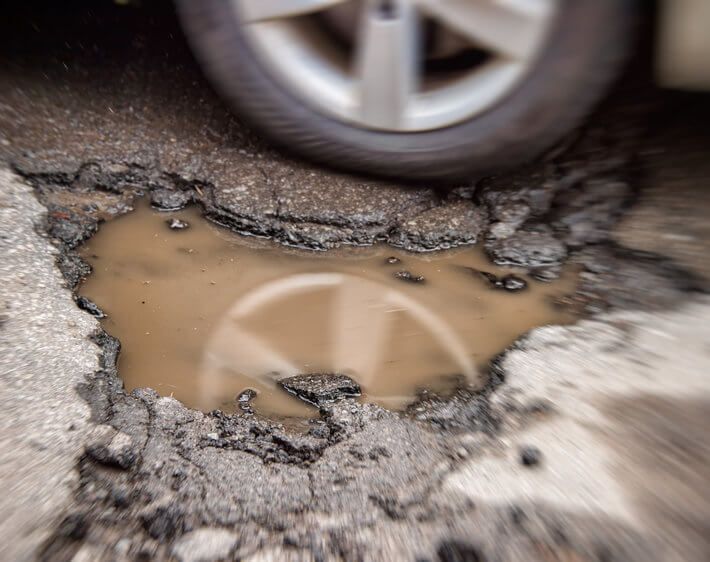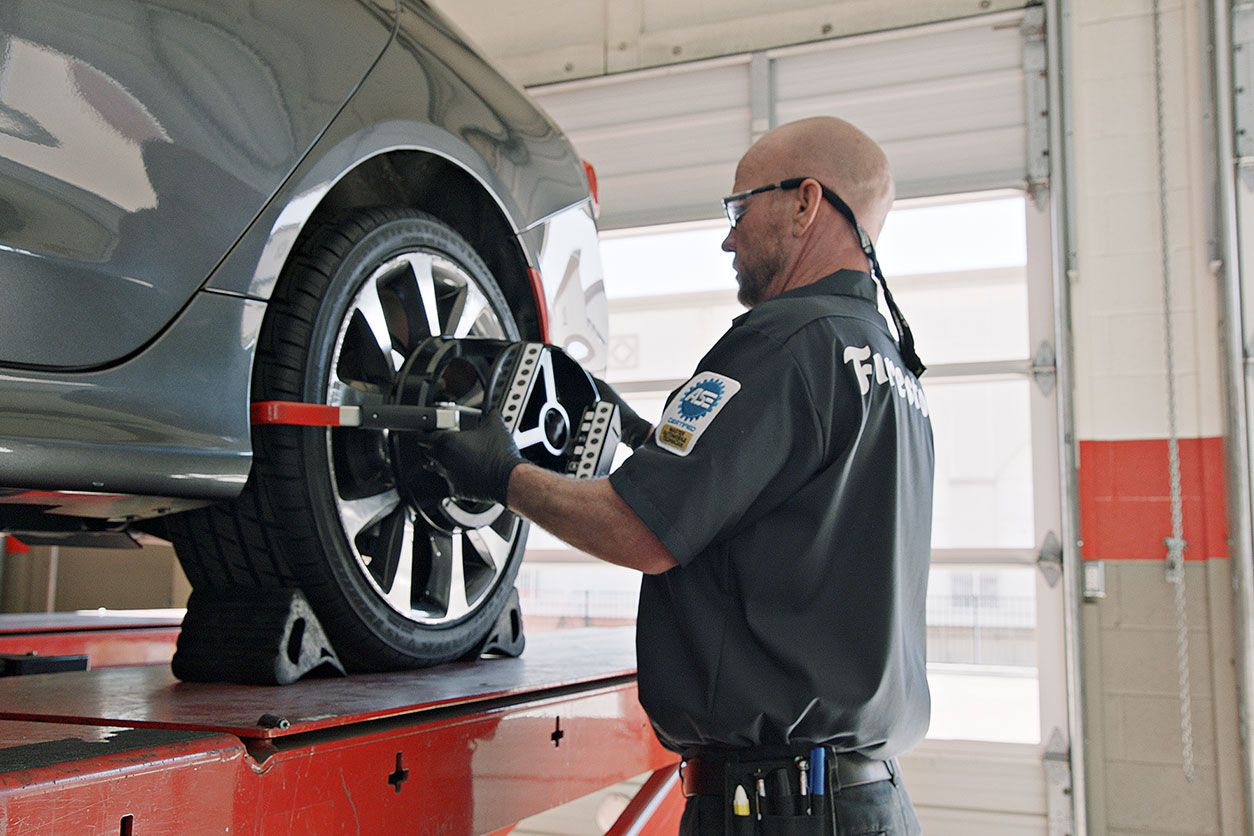Oil change? You know you need that service every few thousand miles. New battery? It’s pretty obvious when your old one says goodbye.
But how about wheel alignment? This often-overlooked service comes with some serious perks, like greater fuel efficiency, a smoother ride, and better vehicle safety—but those are only a few of the benefits.
Here, we’re going to lay out all of the benefits of wheel alignment, which involves making adjustments to your vehicle’s suspension system—the connection between the vehicle and the wheels.
1. Fuel Efficiency
Misalignment can decrease gas mileage by up to 10%, writes Investopedia. Instead of rolling freely, misaligned tires drag. That means if your tires aren’t adjusted properly, you could be spending more money on gas. A wheel alignment could help you conserve fuel and fill up less often.
2. Smoother Ride
When your tires are out of alignment, your vehicle tends to pull to the left or right, leading to a jarring, bumpy, or even vibration-filled ride. A wheel alignment smooths out your ride and contributes to a better behind-the-wheel experience.
3. Improved Steering
If your car’s wheels are out of alignment, it’s harder to steer. You may even find yourself holding the steering wheel at an awkward angle to drive the car straight, or veering from side to side. This lack of control increases your likelihood of being involved in an accident. Proper wheel alignment means you’re able to steer clear of those problems and maintain stable control of your car.
4. Fewer Auto Repairs
It's rough out there. If your tires are misaligned, a little jolt could lead to big problems. Hitting a pothole, for example, can cause way more damage to your tires and suspension system with a bad alignment. Spending a small amount of money on a wheel alignment can prevent you from shelling out big bucks for bigger auto repairs down the road.
5. Longer-Lasting Tires
Misalignment may lead to premature and uneven tire wear. If you wait to get a wheel alignment until it’s too late, you could find yourself buying new tires more frequently. If you’re close to your vehicle right now, check your tires to see if they show any signs of these three types of uneven or premature tire wear:
- Feathering: Tires become “feathered” when the tread is smooth or worn down on one side and sharp on the other. This type of tire wear occurs when there's a combination of improper alignment settings.
- Camber wear: Is the inside or outside edge of your tire tread looking much more worn than the center of the tread? It could be due to camber wear. Camber refers to the angle of your tires on the vehicle frame, and it can be positive or negative depending on the angle. Positive camber (tilting outward) is usually helpful to keep recreational vehicles stable, while negative camber (tilting inward) helps high-performance vehicles handle turns. While some positive or negative camber is good, too much of either is bad.
- Heel and toe wear: Picture your tire treads, then zoom in. Those individual sections are called tire “tread blocks.” When one side of a tread block appears to be wearing down faster than the other in your tire’s rolling direction, it’s called heel and toe wear. A symptom of heel/toe wear can be noise or vibration.
Getting your tires aligned and balanced every 6,000 miles or so can help your tires—and your entire vehicle—last longer and perform better. Schedule a wheel alignment at Firestone Complete Auto Care if your vehicle shows any signs of misalignment. Our Triple Promise: Fixed right, priced right, right on time backs everything we do—including our wheel alignments.



